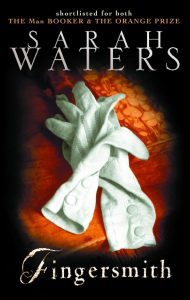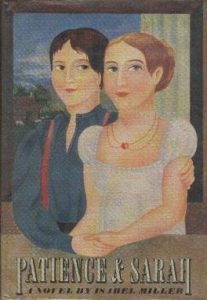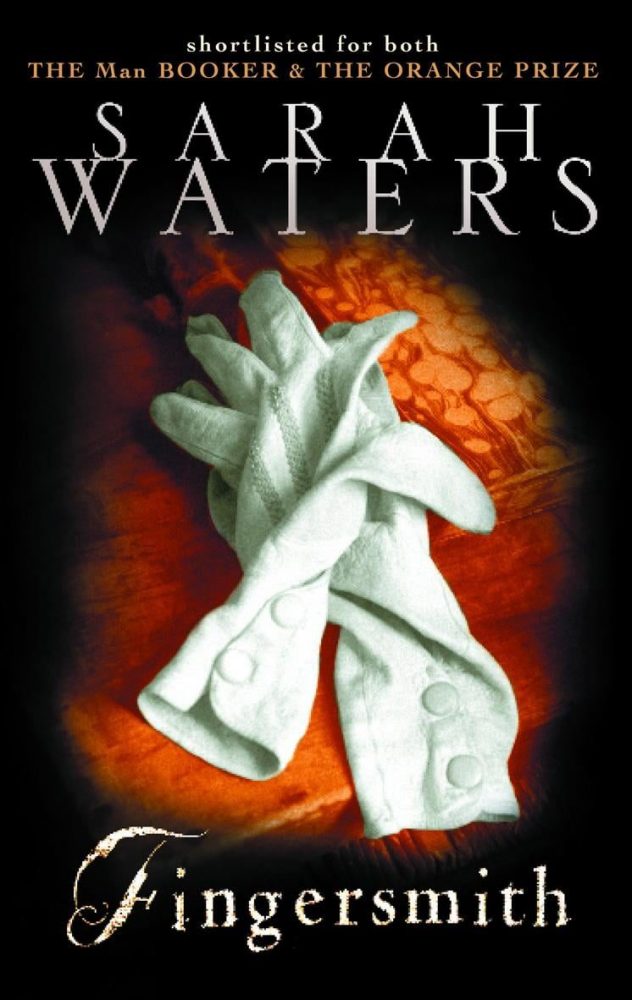1. Rubyfruit Jungle by Rita Mae Brown (1973)
Brown broke new ground with her lesbian love story, and in doing so, gave permission to many girls to put aside their JuicyFruit gum to embrace the rubyfruit within. With great humor and an “everydyke” quality, this 1973 novel remains timeless.
 2. Fingersmith by Sarah Waters (1980)
2. Fingersmith by Sarah Waters (1980)
The plot twists in Waters’ historical fiction beg inevitable comparisons to Charles Dickens, but, of course, Chuck didn’t include titillating lesbian sex scenes and a sweat shop focusing on the creation of pornographic texts. If he did, we’d all be more interested in historical fiction.
 3. Patience and Sarah by Isabel Miller (1969)
3. Patience and Sarah by Isabel Miller (1969)
If Laura Ingalls had an affair with Nellie Olsen on the prairie, you might have a sense of Miller’s popular historical novel. Written in 1969, Miller’s book explores issues like the delicate first forays into lesbian sex, cross-dressing in spite of being labeled “scandalous” and leaving home to make one’s own space in the world.
4. Fried Green Tomatoes at the Whistle Stop Cafe by Fannie Flagg (1987)
You’ve seen the movie, now read the book—it’s only slightly less cryptic in its declaration of a sexual relationship between two women living in Alabama in the early 1900s. You’d have to be reading with blinders on to not grasp the parallels of honey gathering with seduction and food fights with love making.
5. Crybaby Butch by Judith Frank (2004)
If you don’t like the tension that is typical when two butch women are in a room together with one femme, then this is not the book for you. Frank writes about the parallel lives of two butch women who have crossed each other’s paths. Frank’s prose is beautiful and her characters are interestingly complex, which provides a more realistic conceptualization of the butch continuum.
6. Stone Butch Blues by Leslie Feinberg (1993)
For something more “old school” butch, Feinberg’s classic autobiographical novel, Stone Butch Blues, was the breakout text of the genre. It unflinchingly reveals the underbelly of butch culture before it was socially acceptable—even in the margins—to be stone, boi, tranny, tomboy, top, futch or whatever serves to define the masculine and feminine that dances within each of us.
7. Oranges Are Not the Only Fruit by Jeanette Winterson (1981)
This novel depends on Biblical analogies and indicts ardent religion, conservativ
e culture and anti-intellectual mindlessness as the death of passion and freedom. Winterson is a literary carpenter, taking liberties with style and form that can leave some readers a bit baffled, but nonetheless better for having read her semi-autobiographical tale.
8. The Color Purple by Alice Walker (1982)
This book is not about being a lesbian, per se, although there are definite sparks in the sultry love scenes between Shug and Celie. Set in the Deep South, Walker’s tour de force is a glimpse into the struggle of an uneducated African American woman to overcome illiteracy, domestic violence and displacement.
9. Bastard Out of Carolina by Dorothy Allison (1992)
Allison, a lesbian writer, has created a young heroine in Bone who is as endearing and memorable as To Kill A Mockingbird’s Scout Finch. The book depicts the good, the bad and the ugly of women in the South and the choices they have to make in order to save themselves.
10. Crocodile Soup by Julia Darling (2000)
A contemporary novel set in modern day England, Darling gives us a charming glimpse of Gert, who is ready for love after mending a broken heart and ready to re-enter the world by making herself visible. Somewhat dark in humor, the book is a parade of odd balls, whack jobs and the emotional careless, pretty much like your last dinner party.
